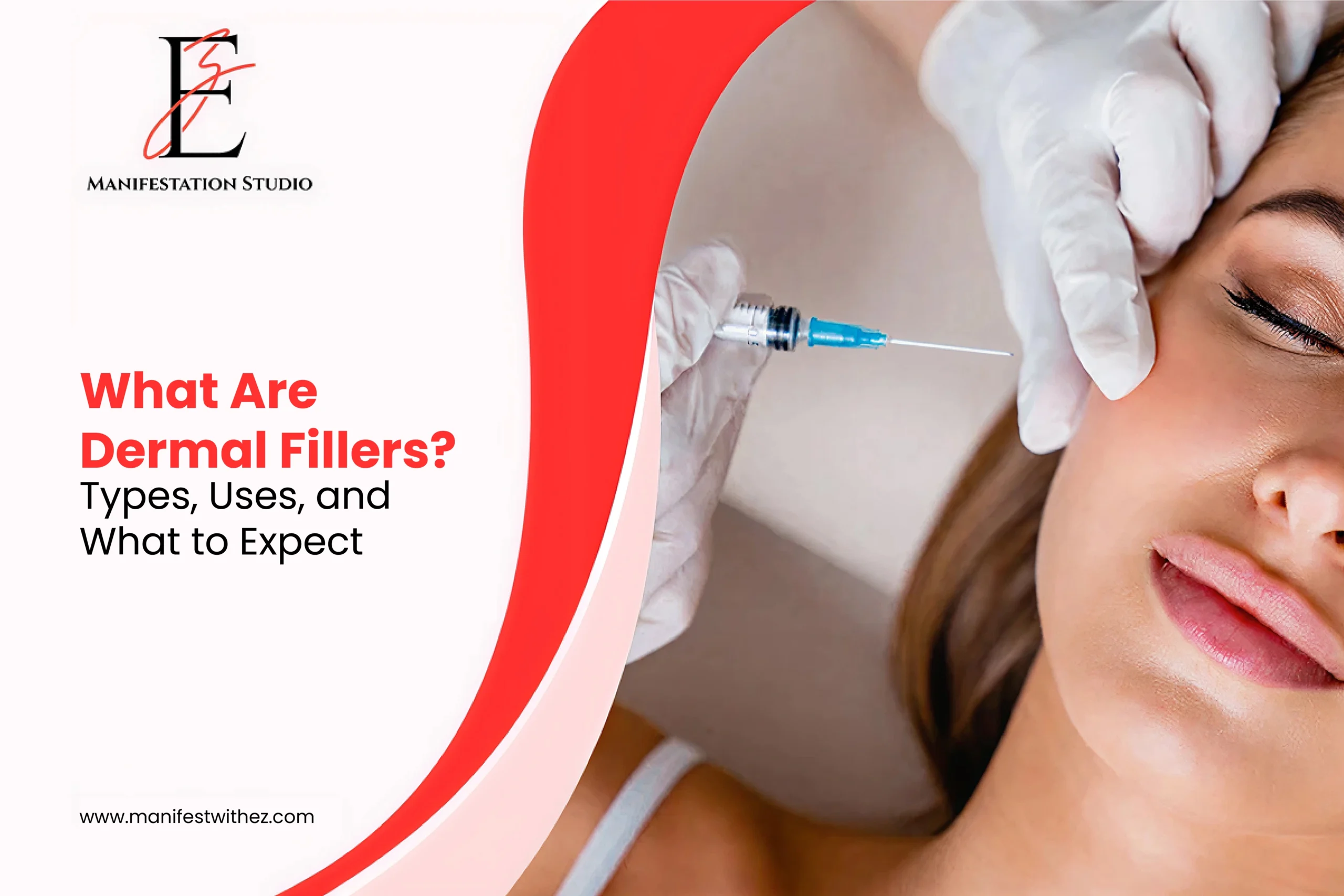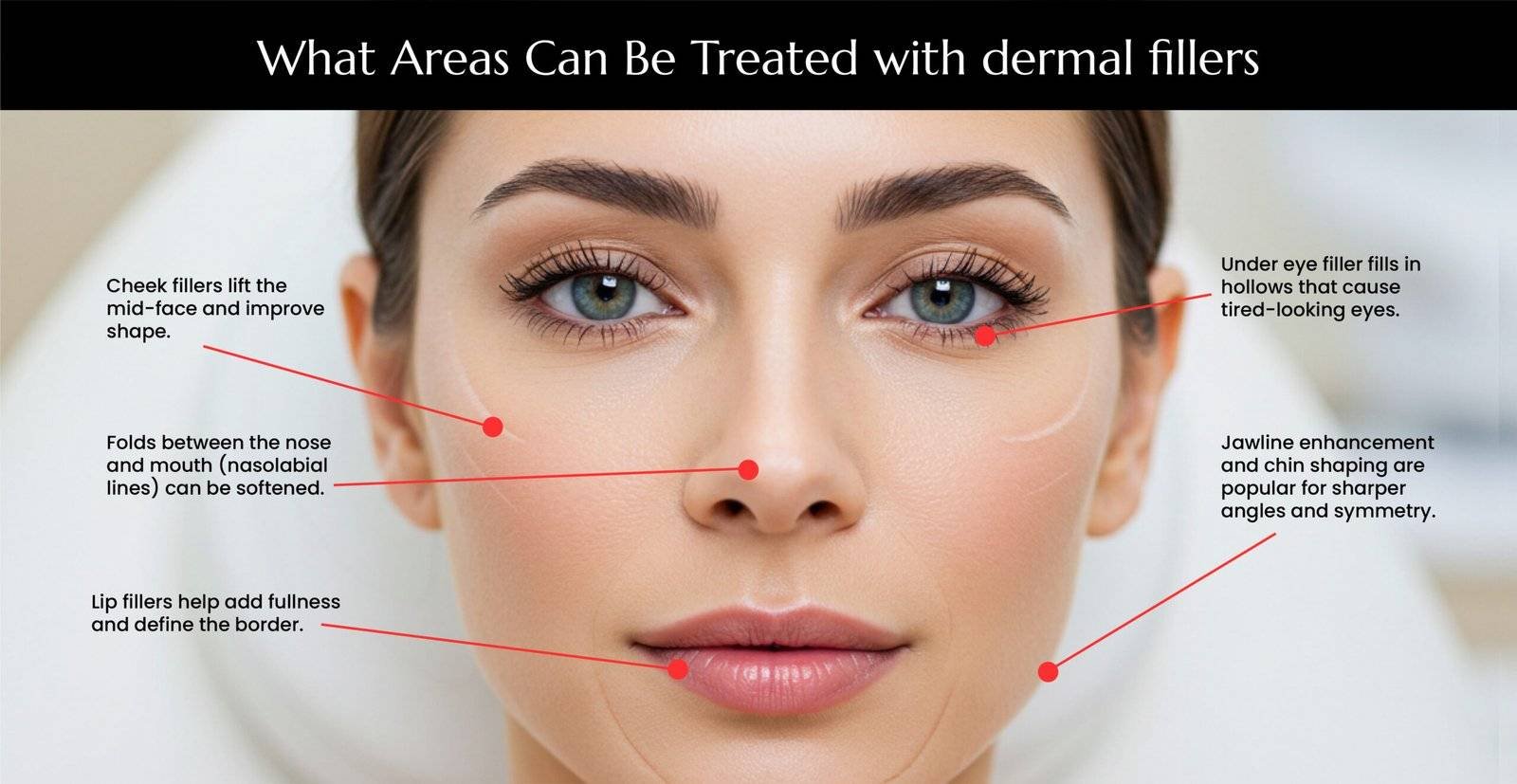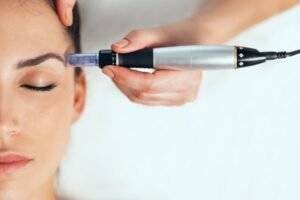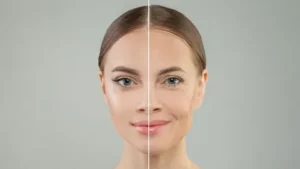
Lines, loose skin, or volume loss in the face are some of the issues people often report when getting older. Such changes force many people to seek alternatives such as dermal fillers. These non-surgical cosmetic treatments provide a fresh, new look.
The dermal fillers are fast and this has made them one of the most demanded procedures in beauty centres nowadays. They are used to add volume, erase wrinkles, and contour some parts such as lips and cheeks.
In this blog, you will be taught about what are dermal fillers, its various types, what takes place during a session, and what the expected results are. Not sure or want to know more? We will do that as well, meaning you will leave without doubts or concern.
Table of Contents
ToggleWhat Are Dermal Fillers?
They include cosmetic injectables that are inserted under the skin in order to replenish the volume, shape, or smoothness. The majority contains the use of safe materials such as calcium hydroxylapatite or hyaluronic acid. Your body already has these substances in relatively small amounts.
Fillers work by filling in space under the skin. This lifts areas, softens lines, or makes features like lips appear fuller.
A frequently asked question is what the difference between Botox and dermal fillers is. Botox paralyzes body organs to prevent movement that brings about wrinkles. Fillers fill up spaces where they are wanting. They are both used as anti-aging treatments yet they work differently.
Types of Dermal Fillers
Knowledge of the types of dermal fillers makes you understand what could be appropriate for you. All of them have a particular purpose based on the area and the result desired.
| Filler | Description |
|---|---|
| Hyaluronic Acid (HA) | Found in Juvederm and Restylane. Best for lips, under eyes, and light wrinkles. It’s smooth, soft, and reversible if needed. |
| Calcium Hydroxylapatite | Found in Radiesse. Great for deeper lines or folds like those around the mouth or nose. Adds more structure. |
| Poly-L-lactic Acid | Found in Sculptra. Stimulates collagen growth over time. Used for soft tissue loss and general facial volume. |
| Polymethyl-methacrylate microspheres (PMMA) | A firm filler that lasts longer. Used when a more permanent or structured result is needed. |
Pro Tip:
What’s the best dermal filler for me? That depends on the area you want treated, your skin type, and your goals. A trained injector can guide you after seeing your face in person.
What Areas Can Be Treated?
Dermal fillers are flexible and work on several parts of the face—and even the hands.
-
- Lip fillers help add fullness and define the border.
-
- Cheek fillers lift the mid-face and improve shape.
-
- Folds between the nose and mouth (nasolabial lines) can be softened.
-
- Under eye filler fills in hollows that cause tired-looking eyes.
-
- Jawline enhancement and chin shaping are popular for sharper angles and symmetry.
-
- Fillers also help smooth out aging signs on the back of the hands.
This would make non-surgical face contouring a real possibility to individuals seeking an observable outcome without going under the scalpel.
What to Expect During and After Treatment
Getting fillers starts with a talk. Your provider will ask about your goals and look at your face closely. Choosing a trained and experienced professional is the most important step.
Treatment usually takes 15–45 minutes. Some areas may feel a quick pinch, but many fillers include numbing medicine. A cream may also be used to reduce discomfort.
Results show up right away. Some swelling or slight bruising can happen but fades in a few days. Follow basic dermal filler aftercare:
-
- Use a cold pack if needed
-
- Skip makeup for a day
-
- Avoid hard workouts for 24 hours
What to expect after dermal fillers also depends on your body. Some see mild puffiness, while others feel nothing. Full recovery can take a few days.
Recovery time is short. Most people return to work the same day. Results may last between 6 to 24 months depending on the filler used and the area treated.
Common questions answered:
-
- Is getting fillers painful? Slight discomfort is possible, but most find it tolerable.
-
- Can fillers look natural? Yes, when done by someone skilled.
-
- How soon will I see results? Right away, though swelling may hide the final look for a day or two.
Are Dermal Fillers Safe?
The question of the most people is are dermal fillers safe?. The response is yes. FDA-approved fillers are safe under the hands of professionals.
The light swelling, minor bruising or some mild tenderness result as the most common side effects of dermal fillers. These normally disappear within a few days.
There is a low possibility of serious risks but the possibility still exists, that is why the selection of a good clinic is important. Prior to treatment, your provider must always discuss the risks and the benefits.
Choosing the Right Clinic or Provider
Finding the best dermal filler clinic in Clearwater starts with research. Check that your provider is licensed, trained, and has experience with different filler types.
A competent cosmetic injector will attend to your interests, assess your facial anatomy, and advise on the secure alternatives. Always request to see previous outcomes to know their style.
Each face is different. The best outcomes come from personal attention. A good consultation builds trust and sets clear expectations.
Conclusion
Dermal fillers contribute to the shaping, lifting, and smoothing and achieve natural and subtle results that do not appear overdone.
It is a low-risk treatment and can be quite rewarding in the right hands.
Book a dermal filler consultation with a skin expert today. They could help you in the direction based on your skin, face, and what you want to achieve.
FAQs
How long do dermal fillers last?
Will my face look fake or overdone?
Can I go back to work the same day?
Are dermal fillers permanent?
Author

Maria Seth
Maria Seth writes for the Manifestation Studio blog to educate people about safe, effective beauty practices. With a background in skin rejuvenation and holistic skincare, she focuses on cutting through the noise, so readers know what’s real, what’s right, and what actually works.
Related Blogs
What Is Microneedling? Benefits, Process, Safety, and Results Explained
What is Microneedling? Microneedling is an advanced surface rejuvenation technique...
Read MorePRP Under Eyes A Solution for Dark Circles and Puffiness
Wondering why your eyes always look tired, no matter how...
Read MoreTop Anti-Aging Treatments for Youthful Skin
## Quick Takeaways: Retinoids increase cell turnover for a smoother,...
Read More



